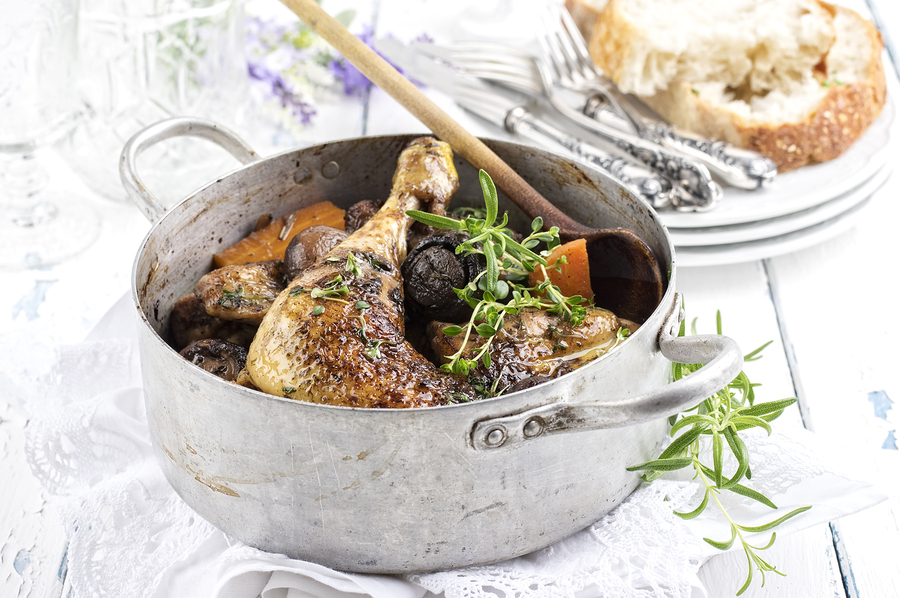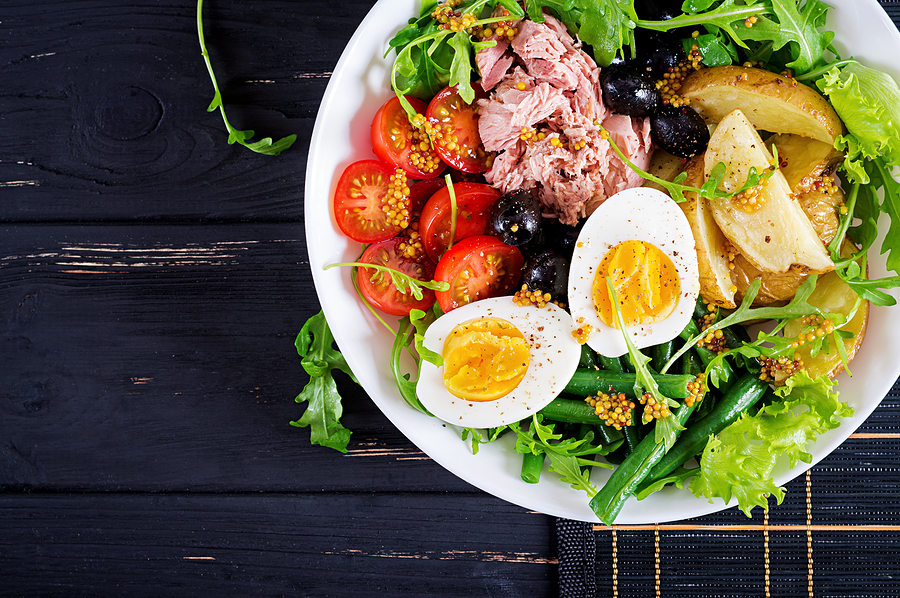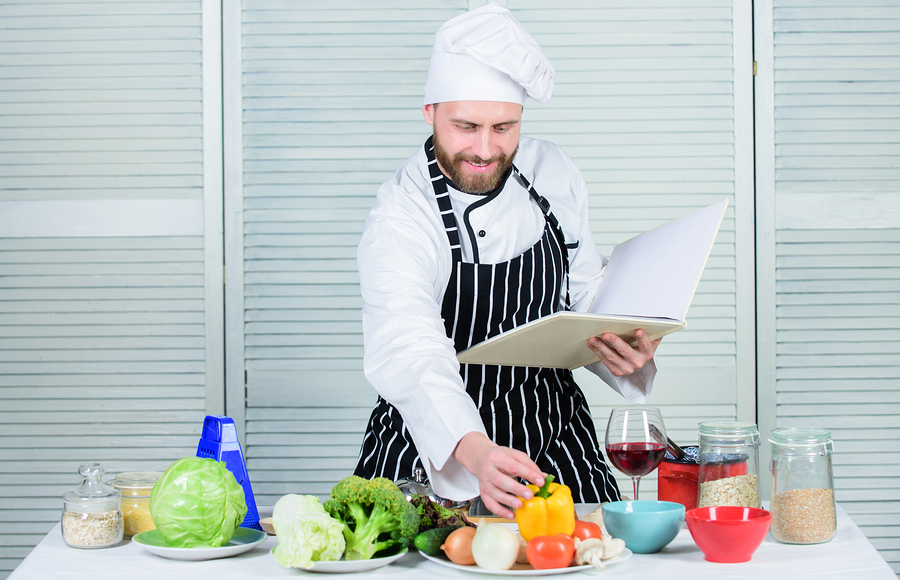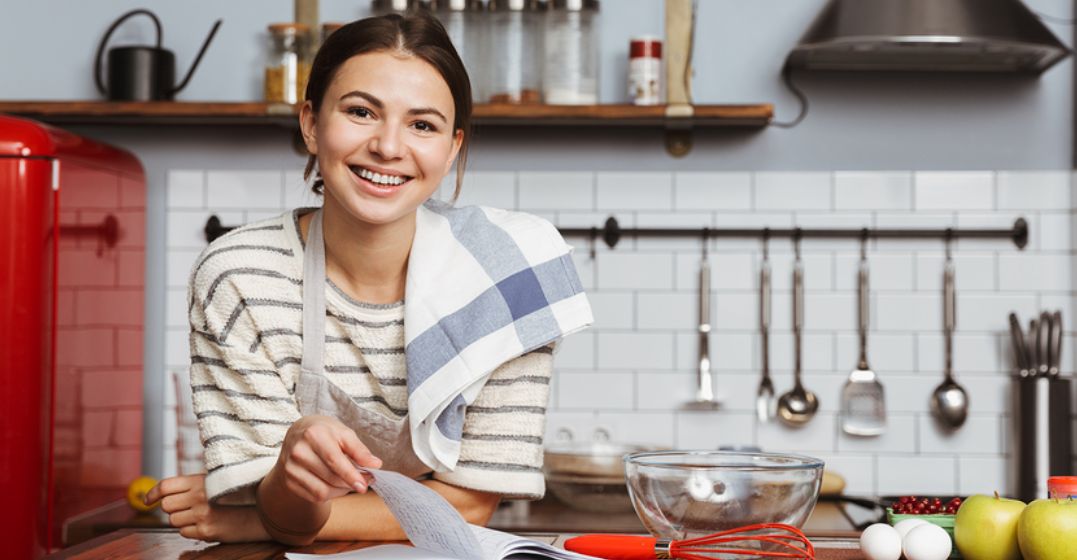Mastering the art of French and cooking
Published on February 13, 2019 / Updated on January 9, 2024
The first, and possibly the most easy option when wanting to incorporate languages into cooking is to supplement your learning with cooking from French recipes – you get the added bonus of everyone thinking you’re fancy for presenting a meal of French classics. Little do they know that you’re learning hundreds of new words in the process! Win-win.
The thing with classic French recipes is, as English speakers, we’ve internalised lots of French words just by ordering (or Googling) the names of French dishes, ingredients, or even the way we cook things. For instance:
Boeuf is beef, and (La) Bourguignon is the name of the region in France where this red wine-soaked dish originated.
Coq is rooster or cockerel and au vin means in wine.

Tarte means, well, a tart, though in this case a savoury one, and flambée means to be flamed, as these thin-crust pizzas are typically cooked in a wood-fired oven.
Frites translates directly to French fries as a noun, but can also mean fried as an adverb.
The croque part translates to bite or crunch, referring to outside of this pan-fried ham and cheese sandwich, which is then coated in béchamel sauce. Add a fried egg on top, and it is a Croque madame.
Sauté means jump, but it also refers to frying something in oil, and the way things can jump around in the pan.
The salade part is of course, salad. The niçcoise bit refers to the salad’s hometown of Nice. The ingredients are generally tomatoes, tuna or anchovies, eggs. Yum! Similarly, a salade Lyonnaise, which is a salad of frisée, poached egg and lardons, hails from the city of Lyon.

Now, if you really want to cook French food, why not go straight to a French-language recipe? To search for French recipes, google the name of the dish, plus recette, which means recipe. It is amazing how many little things get lost in translation, or just get skipped because ingredients are assumed not to be available to an English-speaking audience. I really learned how to make crêpes from a French book I picked up on a whim from the 5€ sale bin in a Paris bookstore 15 years ago, and I still have it.
Etape – step, as in step 1, step 2
Ajouter – to add, as in to add the sugar and the flour
Peler – to peel
Couper – to cut or chop
Cocotte – casserole dish or pot
Casserole – sauce pan or a pot
Poêle – frying pan
Faire chauffer – to heat up
Faire cuire – to cook
Blanc de poulet – chicken breast
Entrées – starters
Plats – main dishes

There are weird crowd-sourced recipe sites in every language, which include truly odd recipes involving canned soup or pre-made packets as main ingredients, photos of unappetizing food under bad lighting and robust comment sections. France is no exception here, so look for proper recipe sites like the recipe section of Le journal des femmes or Larousse cuisine. Ricardo Cuisine and Chatélaine are French Canadian magazines full of recipes in French using common North American ingredients, plus French Canadian classics like tourtière and tarte à sucre.
Of course, you will learn some proper everyday French reading food blogs. Délice Céleste inspires with gorgeous photography and all the hipster food you’d expect from a young blogger (smoothie bowls, dairy-free crêpes). Carnets Parisiens veers into mainly sweet territory, but let’s get real, who doesn’t want to swan into a dinner party with a little something they read about on a French food blog. For straight ahead modern French home cooking, though, Beau à la louche is an excellent resource.

Another suggestion from one of our French Lingoda natives is Marmiton. The app is really simple to use, you can just type in the ingredients you have and it’ll find recipes. Simple! There are also comments from users at the end of the recipes, so you can see what you can add/change to make your food even tastier.
It’s time to learn some new vocabulary and impress your friends with your new-found culinary skills, it doesn’t get better than that! Visit our website and sign up for your French trial today.
